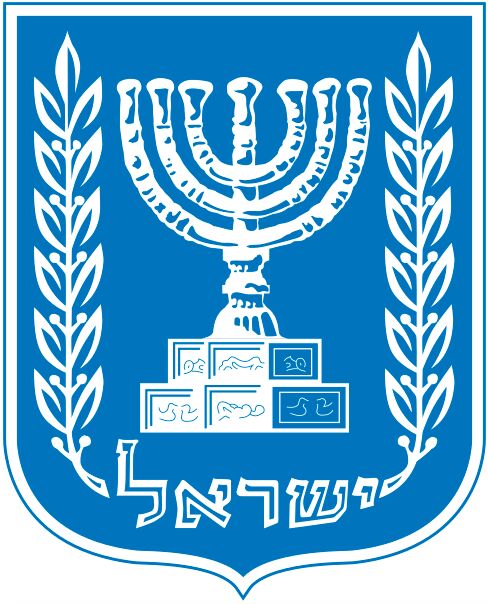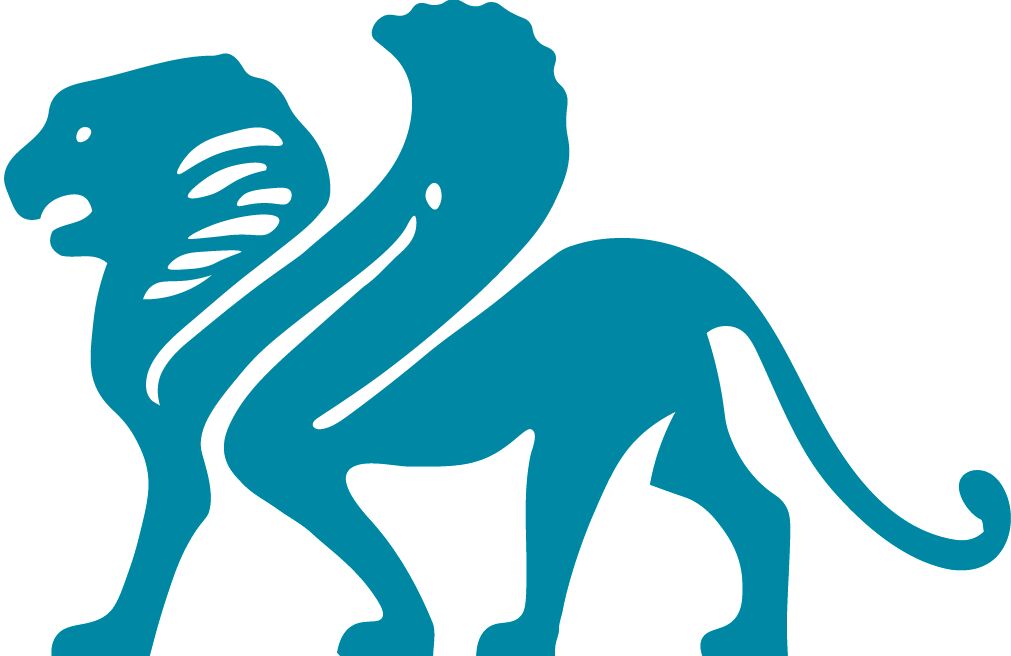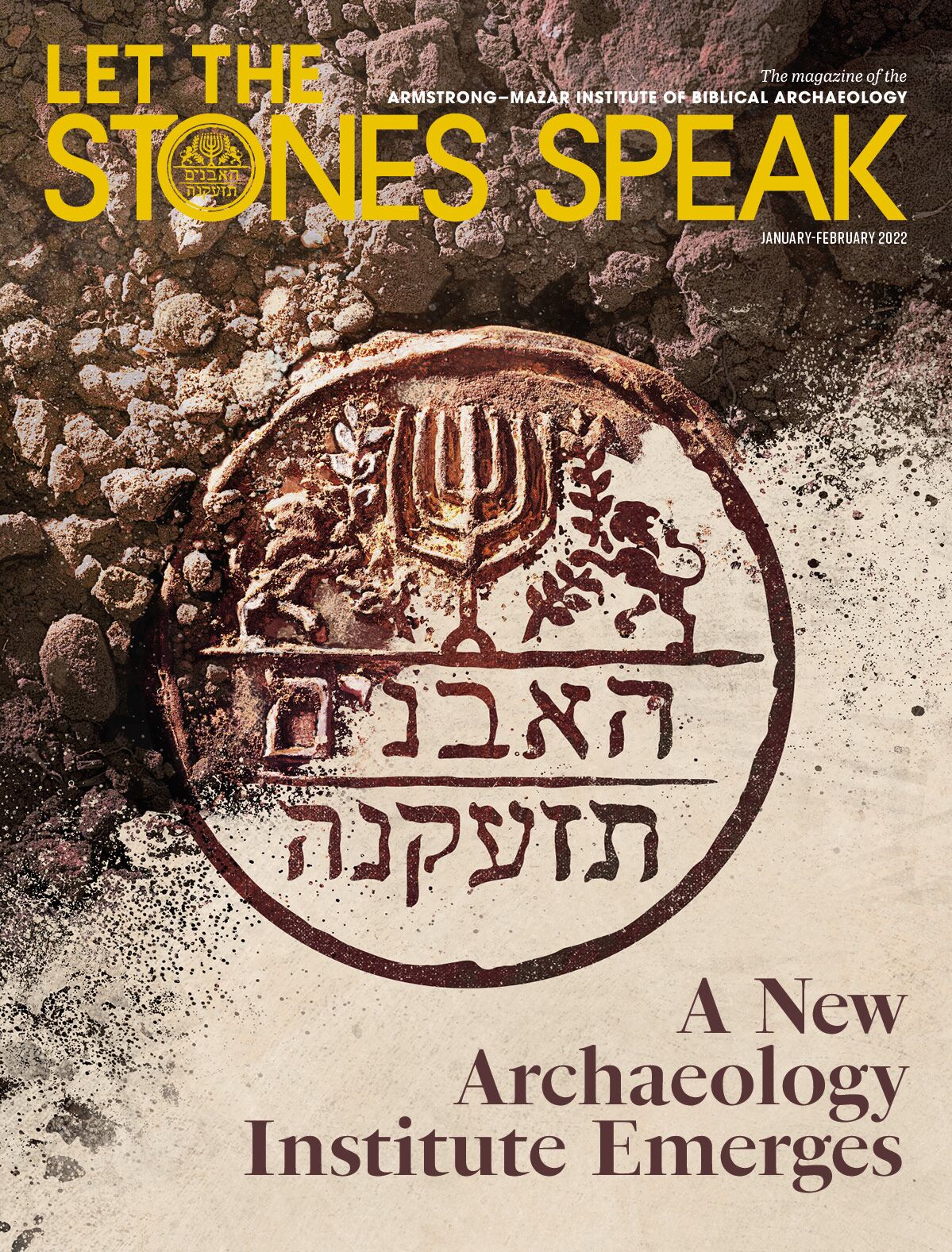What is the meaning behind our institute’s emblem? If you don’t speak Hebrew, perhaps you’re wondering what the text means. And what about the imagery? Here’s a brief summary of the imagery and text that links us to our organization’s purpose, our predecessor Herbert W. Armstrong, and our 50-plus-year archaeology partnership with the Mazar family.
Symbols
At the top is depicted a seven-branched menorah. This, of course, hearkens back to the menorah that stood in the tabernacle and, later, the temple (i.e. Exodus 25:31-32), a golden symbol of continually burning light. It is today one of Israel’s primary symbols and also reflects one of our most exciting discoveries: the sixth-century b.c.e. gold menorah medallion.

On either side of the menorah are olive branches. This is a link to Zechariah 4:11-14: “Then answered I, and said unto him, What are these two olive trees upon the right side of the candlestick [menorah] and upon the left side thereof? And I answered again, and said unto him, What be these two olive branches which through the two golden pipes empty the golden oil out of themselves? … Then said he, These are the two anointed ones, that stand by the Lord of the whole earth” (King James Version). This symbol of a menorah flanked by olive branches is most commonly seen on the official Emblem of Israel, as displayed on flags, printed on official documents, etc (shown on the right).

Flanking this central image on our emblem are two lions. Lion imagery is found throughout the Bible, especially in relation to the tribe of Judah (Genesis 49:9), and the lion is the symbol on the official Emblem of Jerusalem (found, again, on flags and displayed in other forms around the city—see left). The lion symbol was used by Herbert W. Armstrong for his organization since the mid-20th century. It is also linked to the Mazar family: The symbol of the name Maisler (the original European surname of the Mazar family) is a lion. Prof. Benjamin Mazar’s son (and Dr. Eilat Mazar’s father), Ory, stylized his own personal symbol as a winged lion (below).

Thus, two lions befitting the two sides that have helped bring our institute together—Armstrong and Mazar.
Text
The text in the lower half of the emblem, האבנים תזעקנה, can be translated as the stones will cry out. This is a biblical refrain, found especially in Habakkuk 2:11 (which reads in the singular): “For the stone shall cry out of the wall”—in Hebrew, “כִּי־אֶבֶן מִקִּיר תִּזְעָק”. The famous 11th century c.e. Jewish commentator Rashi wrote about this passage of Scripture in plural form (“כי האבנים … תזעקנה מן הקיר”, On Habakkuk, 2:11:1). An almost identical statement to Habakkuk’s is found in the New Testament: “I tell you that, if these should hold their peace, the stones would immediately cry out” (Luke 19:40; kjv). Numerous scriptures attest to the “stones” as history’s witnesses that deliver testimony (i.e. Joshua 24:27: “Behold, this stone shall be a witness against us”).

This biblical principle fits alongside Dr. Eilat Mazar’s personal saying, “Let the stones speak.” It is a motto that we have adopted as the name of our new magazine—Let the Stones Speak (sign up for a free subscription here). Dr. Mazar’s assistant, Brent Nagtegaal, has written an article explaining just what she meant by that phrase—and how it applies to the study of archaeology.
Archaeology, after all, is in large part about revealing stones, the history they have “witnessed,” the stories they tell. Sometimes it takes an attuned ear to hear what they are saying. And sometimes they cry out.

